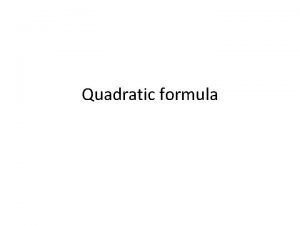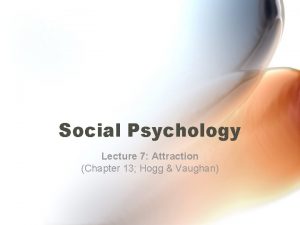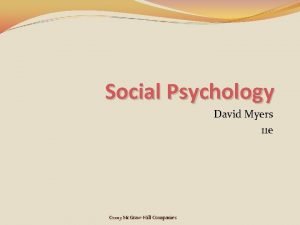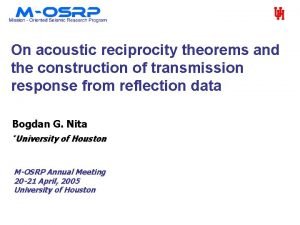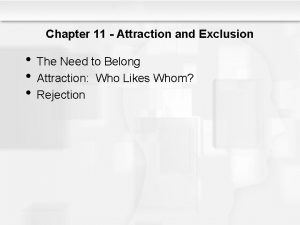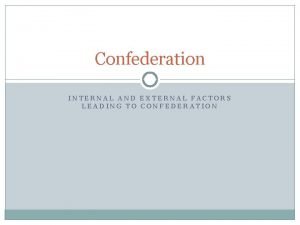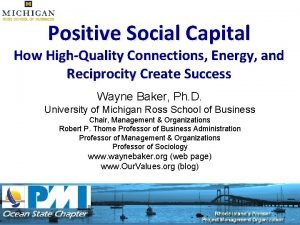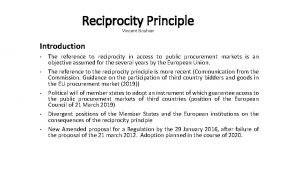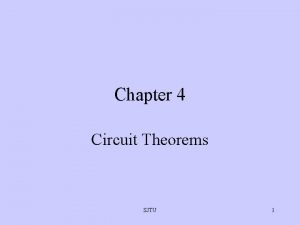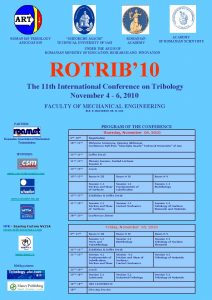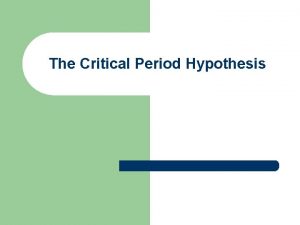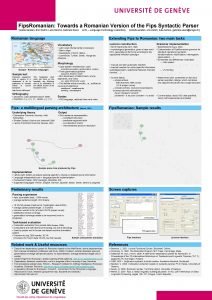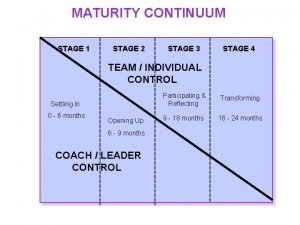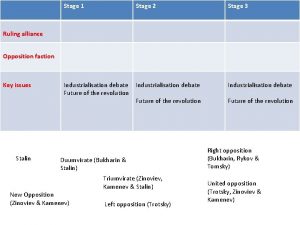ROMANIAN ORPHANS Starter Discriminate stage Reciprocity Critical period


























- Slides: 26

ROMANIAN ORPHANS

Starter Discriminate stage Reciprocity Critical period Meltzoff and Moore Lorenz Monotropic theory NS+UCS=CS Internal working model Nature vs. Nurture Negative reinforcement Attachment Comfort contact Food 44 juvenile thieves

BRONZE, SILVER, GOLD Starter question

Joe was taken away from his alcoholic parents at six months old and placed in care. He was adopted when he was seven years old, but has a difficult relationship with his adoptive parents. He is aggressive towards his younger siblings and is often in trouble at school. His last school report said “Joe struggles with classwork and seems to have little regard for the feelings of others” Bronze- Outline Bowlby’s maternal deprivation hypothesis (6 marks) Silver-Explain Joe’s behaviour referring to the maternal deprivation hypothesis (6 marks) Gold -Discuss Bowlby’s maternal deprivation theory. Refer to the experiences of Joe as part of your discussion (12 marks)

Modal answer: bronze Bowlby’s maternal deprivation hypothesis states that the individual has to form a single continuous and loving attachment, preferably with the mother (monotropy) before the age of 2 ½ (critical period). This attachment will then act as a framework for the infants future relationships (internal working model). However, If the infant does not form an attachment to an adult or the attachment becomes disrupted before the critical period the infant will experiences a number of cognitive and emotional problems including low IQ, delinquent behaviour and affectionless psychopathy. Bowlby’s theory of irreversibility – consequences cannot be reversed

Modal answer: silver Bowlby’s maternal deprivation hypothesis states that the individual has to form a single continuous and loving attachment, preferably with the mother (monotropy) before the age of 2 ½ (critical period). This attachment will then act as a framework for the infants future relationships (internal working model). In Joe’s case, Joe was adopted at seven years old, meaning that he is beyond the critical period. This means that he will not have formed a close attachment with a primary caregiver and may find it difficult forming relationships due to a lack of opportunity to develop an internal working model. Bowlby states that If the infant does not form an attachment to an adult or the attachment becomes disrupted before the critical period the infant will experiences a number of cognitive and emotional problems including low IQ, delinquent behaviour and affectionless psychopathy. Joe is already showing signs of these behaviours as a consequence of maternal deprivation as indicated by Joe being ‘in trouble at school’ (delinquency) and struggling at school (indicator of a low IQ)

Possible evaluation: gold • Bowlby’s confusion over privation and deprivation • overemphasis on mother and monotropy • sensible focus on importance of childhood experiences • wider implications, eg changes in child hospitalisation • use of evidence to support or refute Bowlby’s work • Schaffer’s multiple attachments; • studies contradicting the critical period and reversibility, eg Rutter’s Romanian orphan research.

Lesson Objectives Effects of Institutionalisation Studies on Romanian Orphans By the end of the lesson I will be able to… Understand Apply Evaluate To describe research into the effects of institutionalisation. To explain examples of the effects of institutionalisation. To discuss strengths, weaknesses and evidence of research into institutionalisation. Extension: To formulate links between this research and other topics in attachment.

Context… • Romania’s orphan problem began under the communist rule of Nicolae Ceausescu who banned abortion and denied access to contraception at a time of severe food and energy shortages. • Many Romanians abandoned their newborn children, leaving thousands to suffer at under-funded, state-run orphanages. Many psychologists have used this to study the long term effects of deprivation… Based on what we know about attachment, predict the outcome of these studies… • What would we expect to happen? • How might the orphans behave? Why? • What might the potential problems be with studying the orphans?

Put yourself in their shoes. . https: //www. youtube. com/watch? v=FWKQNMZa--Y As you watch… How do you think growing up in this orphanage may effect the children? What does it actually mean to be institutionalised? Create your own definition.

Institutionalisation The effects of living in an institutional setting. Institution refers to the place like a hospital or orphanage where children live for a long, continuous period of time. There is often little emotional care provided What’s the difference between this and being cared for by a family?

What’s the difference between this and being cared for by a family? Institutional care No attachment figure Bored Less sociable More aggressive Less intelligent Not cared for well Less toys Less interaction Family care Strong emotional attachment More sociable Cared for well

What does the research say? This activity is designed to get you familiar with the studies and findings and to help give you an overview of research into the effects of institutionalisation • You have 10 minutes to read through, highlight and start to learn the findings of studies looking in to the effect of institutionalisation (pages 22/23) • Task: add the findings to the handout to display the results of institutionalisation

Rutter • 165 Romanian children (previously lived in institutions) They were compared to 52 British children adopted by the age of 6 months. • The children were tested regularly for physical, social and cognitive development at the ages of 4, 6, 11, 15. • At the time of adoption, the Romanian children were behind the British children in all three aspects. Cognitively they were classified as mentally retarded. • By 4, most of the Romanian children who had been adopted by the age of 6 months had caught up with the British children. Many of the children adopted after the age of 6 months showed disinhibited attachment* and had difficulties with peer relationships. * Disinhibited attachment: The child doesn’t seem to prefer his or her parents over other people, even strangers. The child seeks comfort and attention from virtually anyone, without distinction.

The Bucharest Early Intervention project Zeanah et al. (2005) • assessed the attachment in 95 children aged between 12 -31 months who had spent an average of 90% of their life in an institution and compared them to a control group (50 children) who spent their life in a “normal family”. • Romanian orphans were randomly allocated to institutional care or fostering • The attachment type was measured using the Strange Situation and carers asked about unusual behaviours (clingyness, attention seeking) Findings: • 74% of the control group was found to be securely attached compared to only 19% of the institutionalised group. • 65% of this group were classified as disorganised attachment. Disorganised attachment: insecure attachment, the children display an inconsistent pattern of behaviour; sometimes they show strong attachment other times they avoid the caregiver.

• Teams of 2 or 3 • Elect a runner • Runner comes up and collects a question • All people in the group collectively write down an answer, but individually in their own notes. • Answer must make sense and be in sentences. • One person brings their answer to the front for me to check. If correct you get the next question. First team to complete all questions wins!

1) Who did Rutter study? Be specific! 2) What did Rutter find? Describe his findings. 3) At what age were the effects of institutionalisation particularly negative? 4) Who did Zeanah (Bucharest Early Intervention Project) study in 2005? Be specific! 5) What method did Zeanah use to measure their attachment? 6) In the Bucharest Early Intervention Project, how did the findings of the control group and institutional group differ? 7) From research describe 3 effects of institutionalisation…

1) Who did Rutter study? Be specific! 165 Romanian orphans adopted in Britain at 4, 6, 11 & 15 years. 52 British adoptees (control) 2) What did Rutter find? Describe his findings. IQ significantly dropped, mental retardation, disinhibited attachment 3) At what age were the effects of institutionalisation particularly negative? 6 months – 2 years 4) Who did Zeanah (Bucharest Early Intervention Project) study in 2005? Be specific! 95 children (12 -31 months who were institutionalised), 50 children (control) 5) What method did Zeanah use to measure their attachment? Strange situation 6) In the Bucharest Early Intervention Project, how did the findings of the control group and institutional group differ? 74% of control = securely attached, 65% of institutionalised = disorganised attached 7) From research describe 3 effects of institutionalisation… Disinhibited attached, disorganised attachment, Low IQ, smaller head circumference, physically smaller,

Discussion: Do you think Rutter would agree with Bowlby? Bowlby: “If an infant is unable to develop a warm, intimate and continuous relationship with his/her mother (or mother substitute) before the age of 2. 5 yrs then the child would have difficulty forming relationships with other people and be a risk of behavioural/emotional disorders. ” Rutter argued that the idea of a critical period is incorrect. His results suggest that children can still form an attachment after 2. 5 years old; however, it just takes them longer to form one. He argued that the term should be ‘sensitive period’ and not ‘critical’.

Exam focus Answer the exam questions focusing on research methods and Romanian Orphans Extension: Outline the effects of institutionalisation (6 marks)

Answer (c) Bowlby (1946) conducted interviews with 88 children and their families. From 44 thieves. 16 were diagnosed with affectionless psychopaths. 86% of the 16 had suffered early and prolonged separation from their mothers. This was in contrast to the control group where only 4% had suffered early and prolonged separation.

Answer (D) Bowlby • possible researcher bias • retrospective data • inability to show cause and effect • poor validity.

Post it note pros and cons You have a series of post it notes in front of you… In groups create as many evaluation points as you can of research into the effects of institutionalisation! Write them down in short version for now. Just BASIC points, arguments, pros and cons. • Prompts Methods Used including controls • Extraneous Variables • Practical Applications/usefulness in real life • Sample • Ethical issues • Long term / short term effects • Causation or correlation? Use the prompts at the side to help you! Pros Strengths Arguments For Supporting Evidence Cons Limitations Arguments Against Contrasting Evidence Extension…. push yourself to draw upon your prior attachment and research methods knowledge to draw up your own! Justification is key!

Post it note pros and cons Now let’s try and turn these into effective evaluation (AO 3) points…. ! Each pick an evaluation point using your post it notes. Erase and re-draft to make fully effective points! Ensure each member of the group has the final version written down! Basic (D) Straightforward & concise points Moderate (C) Evaluation points are identified and partially explained Detailed (B/A) Well developed points, identified, explained and linked back to an element of the study/theory. Use the PEEL structure to ensure they are fully developed. Highlight key terms used in your points!

Plenary (exam focus) Discuss the effects of institutionalisation. Refer to the studies of Romanian orphans in your answer. (16 marks)

Overview
 Critical semi critical and non critical instruments
Critical semi critical and non critical instruments Spaulding classification of medical devices ppt
Spaulding classification of medical devices ppt Critical period vs sensitive period
Critical period vs sensitive period Critical period vs sensitive period
Critical period vs sensitive period The development of children 7th edition
The development of children 7th edition Critical period vs sensitive period
Critical period vs sensitive period Review literature
Review literature Widows and orphans word 2016
Widows and orphans word 2016 Seog grant
Seog grant When will you the orphans
When will you the orphans Diskriminantas
Diskriminantas Discriminate the expressions: * (arr+i) and (arr+i).
Discriminate the expressions: * (arr+i) and (arr+i). What is the zero product property
What is the zero product property Reinforcement affect model of attraction
Reinforcement affect model of attraction Reciprocity program
Reciprocity program Reciprocity norm
Reciprocity norm Proximity relationship
Proximity relationship Reciprocity theorem experiment
Reciprocity theorem experiment Reciprocity of attraction
Reciprocity of attraction Tom kvaser
Tom kvaser Reciprocity religion
Reciprocity religion Csde certification lookup
Csde certification lookup Liking begets liking
Liking begets liking Reciprocity treaty cancelled
Reciprocity treaty cancelled Reciprocity ring examples
Reciprocity ring examples The reciprocity principle
The reciprocity principle Linearity theorem
Linearity theorem










